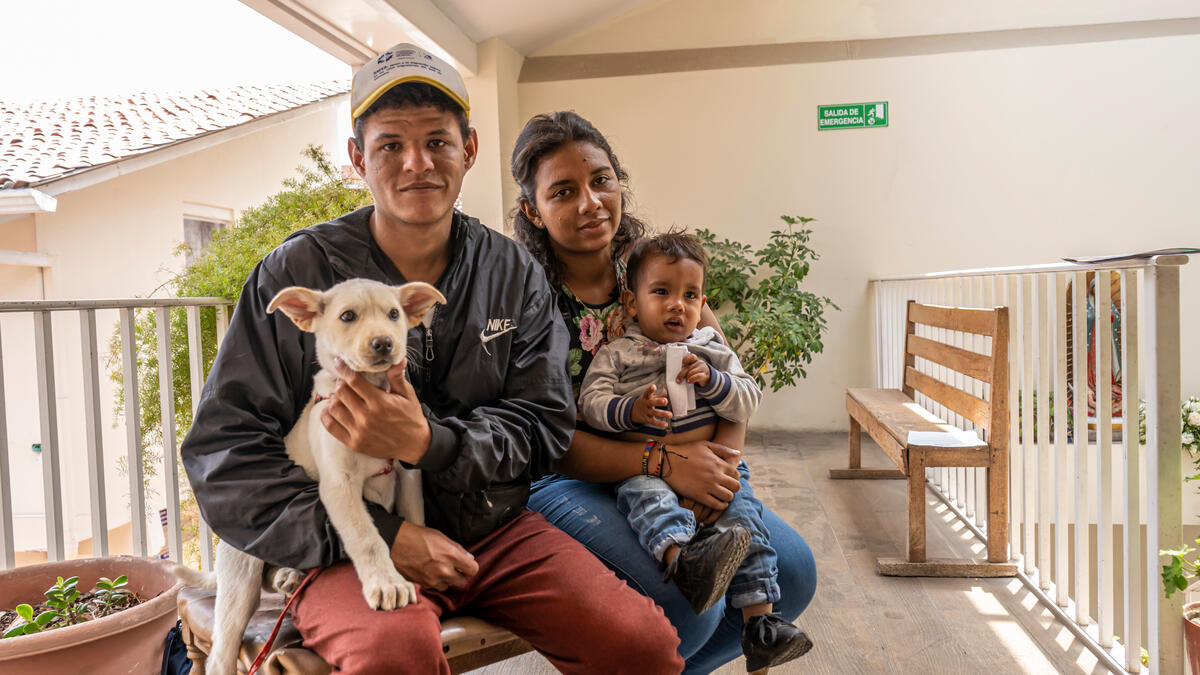Felt-making craft helps young Roma refugee women in Balkans state
Felt-making craft helps young Roma refugee women in Balkans state

SKOPJE, The former Yugoslav Republic of Macedonia, May 24 (UNHCR) - Most people forced to flee their homes because of violence or persecution end up losing almost everything, including employment and the opportunity to earn a living.
But here in Skopje, UNHCR has been helping a small group of Roma women learn a simple, ancient craft that will boost their self-esteem and help them and their families become self-sufficient.
Earlier this month, the UNHCR office in Skopje became a virtual workshop as five young Roma women and their teacher, Vesna Avramovska, picked out colourful balls of wool and turned them into strips of felt using traditional techniques. From this finished product, they created magical pillow cases, dolls, bags and other hand-crafted items under Avramovska's expert guidance.
"We will sell them and increase our families' income," said 20-year-old Esma Gasnjani, with a huge grin across her face. She and her Roma classmates are among more than 1,900 refugees and asylum seekers who have been living in FYR Macedonia since fleeing Kosovo. Most are from Kosovo's Roma, Ashkalija, Egyptian and Gorani minorities, who fled their homes in 1999. There are also a few Bosnians and ethnic Albanians.
The five women were taking part in a three-day felt-making workshop organized by the UN refugee agency and the Macedonian Artisan Trade Association (MATA), of which Avramovska is deputy director. The course was part of a long-term UNHCR programme to give female refugees in FYR Macedonia the skills to support themselves and reduce their dependence on aid hand-outs.
"Learning these old and traditional crafts in this region will certainly help refugees, both here in exile and - hopefully - upon returning to their homes," said Carlos Maldonado, UNHCR's representative in Skopje.
The idea for the course came last December when Roma refugee women taking part in the annual MATA Christmas bazaar saw some traditional felt garments produced by local artisans. They discovered that not many people knew how to make felt and felt artefacts, which are in high demand and fetch good prices. They saw this as an opportunity and asked UNHCR to help set up a workshop.
"We approached MATA and they were happy to respond to our request to teach felt-making techniques to the Roma women," recalled Maldonado.
Felt is one of the oldest forms of fabric known to mankind. It is a non-woven cloth that is produced by matting, condensing and pressing fibres - normally wool. It can be any colour, hard or soft and formed into any shape or size.
The Roma women learnt "dry felting" and "wet felting" techniques during the course, towards which they paid US$180 of their own money to cover costs of materials. "This is the money we made at the Christmas bazaar," said Gasnjani, who clearly thought it was a good investment. She welcomed the chance to earn a living after eight years in FYR Macedonia.
Gasnjani and her colleagues will sell their products on the local market and at bazaars run by various non-governmental organizations in Skopje. They will also plough back some of the profits into training courses for more Roma women. UNHCR supports their plans and has pledged to help.
By Aneta Galic in Skopje, former Yugoslav Republic of Macedonia








